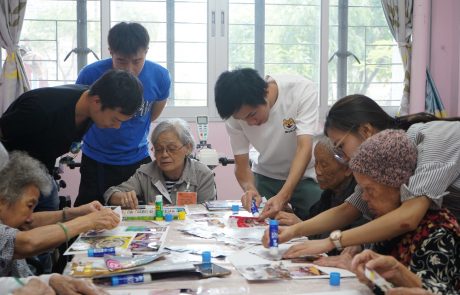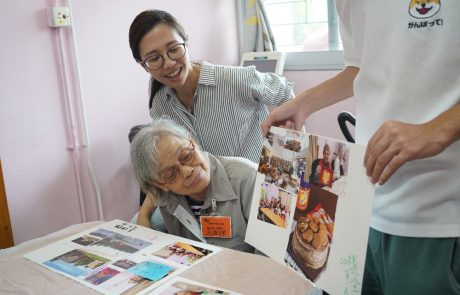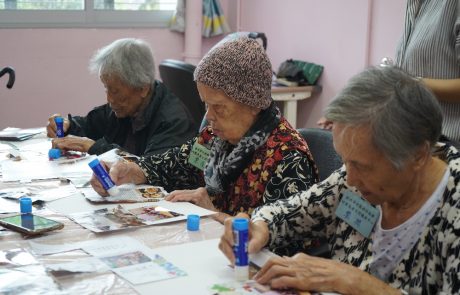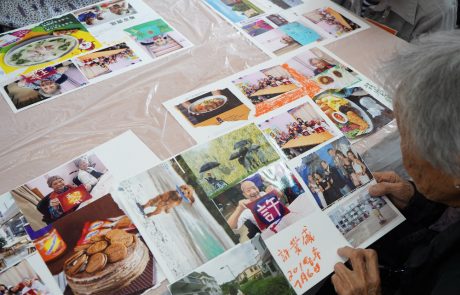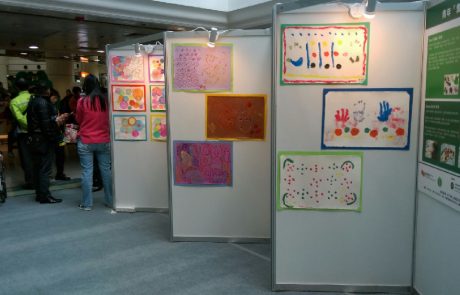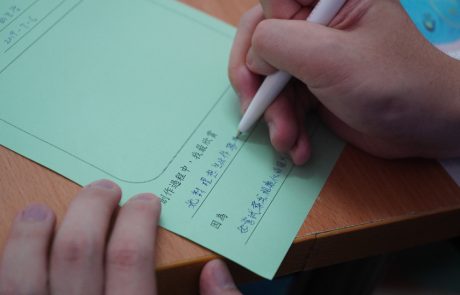What amazing effects would it bring when young people introduce art into the lives of the elderly? A group of young instructors from The Salvation Army ‘Teen E. Project’ tried to find out the answer by giving art therapy to elders with dementia in residential homes. Through creating art together, elders become able to release emotions and reignite their confidence and young people have the chance to learn about the inner world and needs of the elderly. With a smile, the barrier between them has broken – a strong relationship has built and intergenerational inclusion realised.
The power of art
Elderly persons with dementia would suffer a decline of body functions, which impairs their cognitive abilities or even the ability to express their feelings. As a means of communication, art can allow the inner voice of these elderly to be heard. Over 10 participating young instructors were given related training and afterwards they organised art classes for elderly patients of nursing homes in various districts. Through various forms of creative art of different complexity levels, they help the elders to express feelings through art.
Channis, one of the instructors, shared, ‘We start by using rather simple art tools or materials such as pastels or watercolors to make it easier for them to pick up various basic skills.’ On the day of the interview, the elders were making collages. They tore off photos or pictures they like from magazines, stuck on the drawing paper and presented their works to their team members. They might have chosen some ordinary scenery photos, but put together those photos formed very meaningful works that showed the flashbacks of their lives!
Recognising the abilities of elders
Illnesses severely undermine the self-confidence of the elderly and darken their moods. Channis remembers that in the beginning many elders were reluctant even to pick up the drawing tools. ‘They thought they couldn’t do anything and wouldn’t know how to create…’. To deal with this passivity, Channis and other instructors have thought of a way to break the ice, ‘Social workers gave us a tip: give the elder buddies a big, big smile. They will think you are nice and will remember you.’
Smiles convey happiness, which is contagious and helps build mutual trust. Gradually, the passive elders became more proactive and willing to participate in the activities. They started creating their work as soon as they received the drawing tools and what moves Channis most was seeing some elders help the physically weaker residents to take part in the activities. After getting along with the elders for 10 lessons, Channis has witnessed their changes and realised that getting old doesn’t necessarily mean losing creativity. ‘What the elder buddies need most is the assurance from the people around. There’s no such thing as standard answer in art therapy. Every piece of work is unique and meaningful that expresses the personalities and views of the artist. During the classes, we call the elders by their names directly without addressing them “grandpa” or “granny”, as age shouldn’t become a label that defines one’s abilities.’
About ‘Teen E. Project’
The Project organises young people of post-secondary education qualification or above to use their knowledge and skills in response to the needs of elderly (especially dementia patients) in aging society nowadays. Currently working with Our Lady of Maryknoll Hospital, various elderly day care centres and nursing homes, the Project aims to improve the quality of life of the elderly in their twilight years by promoting social awareness for the elderly.



